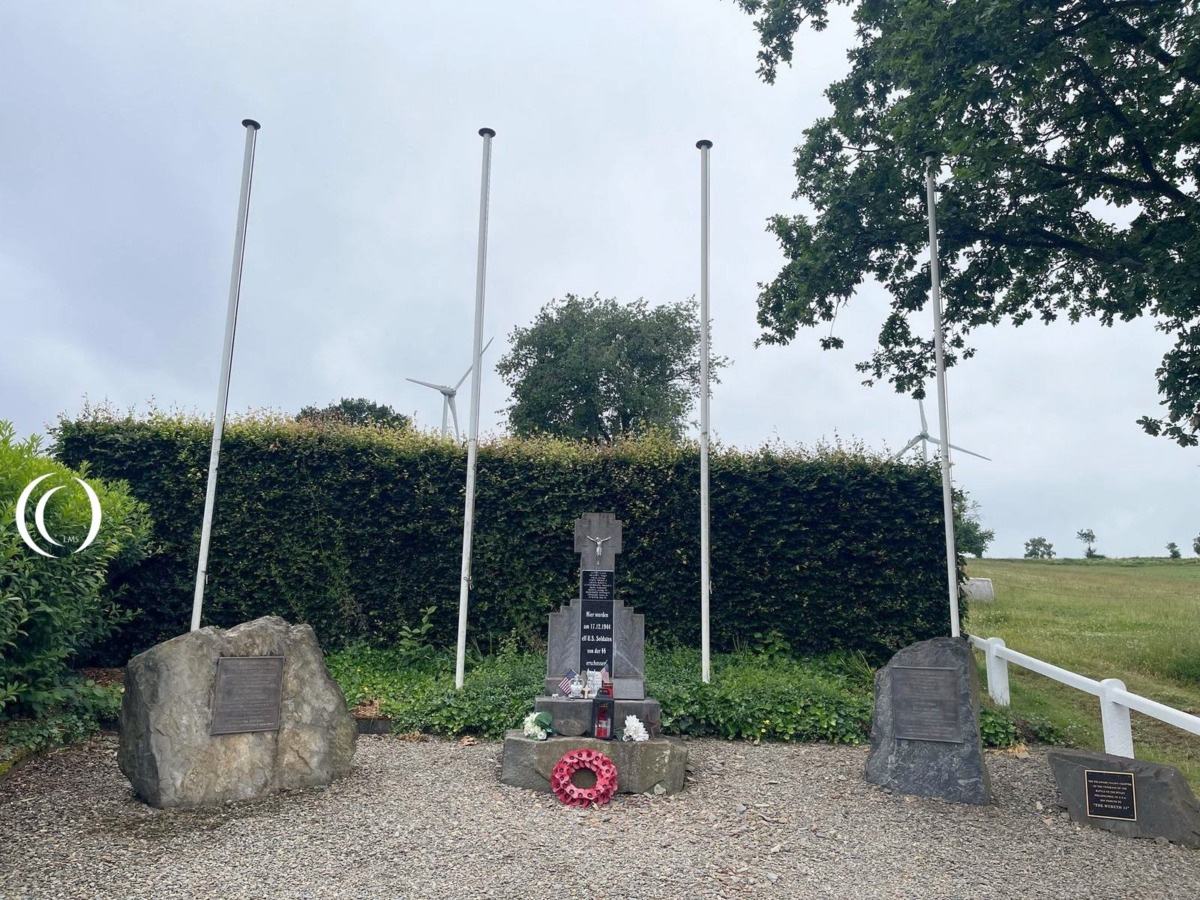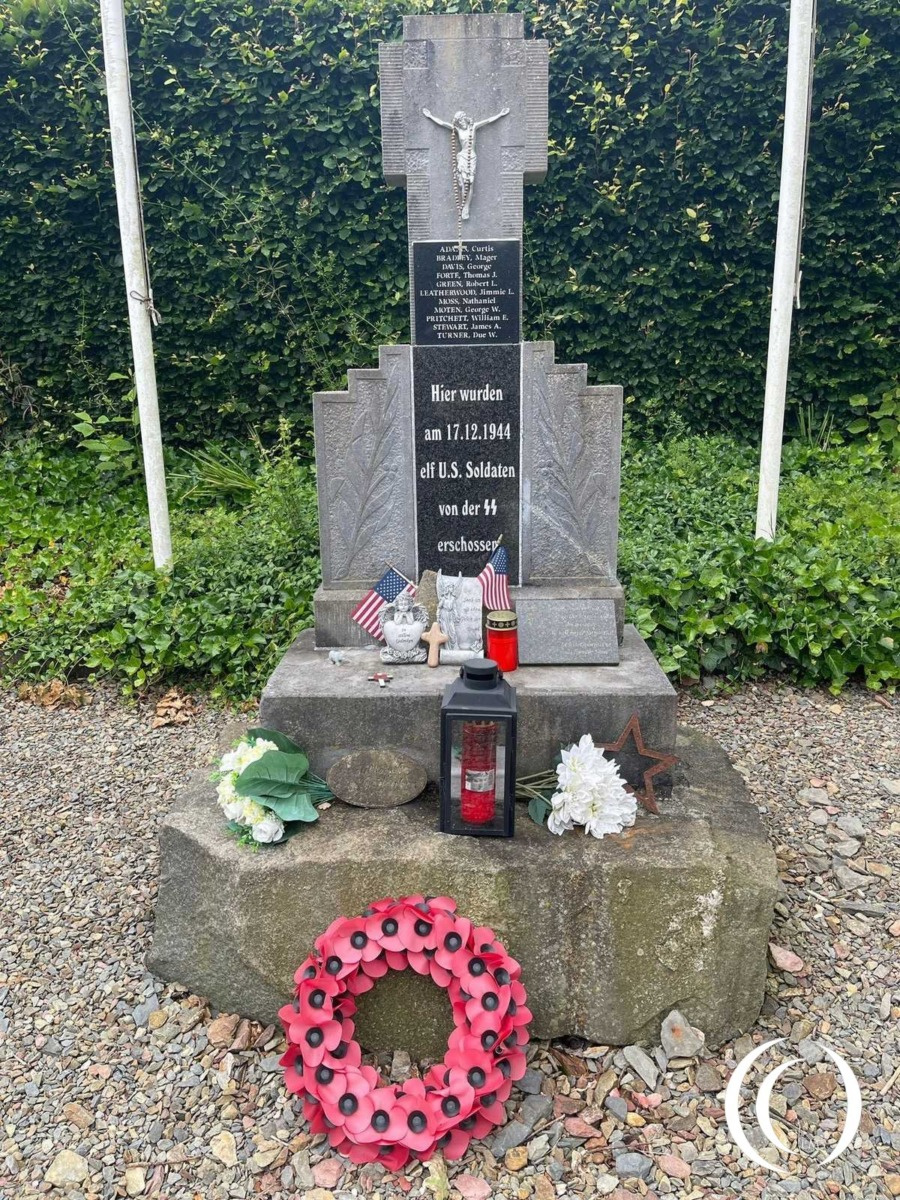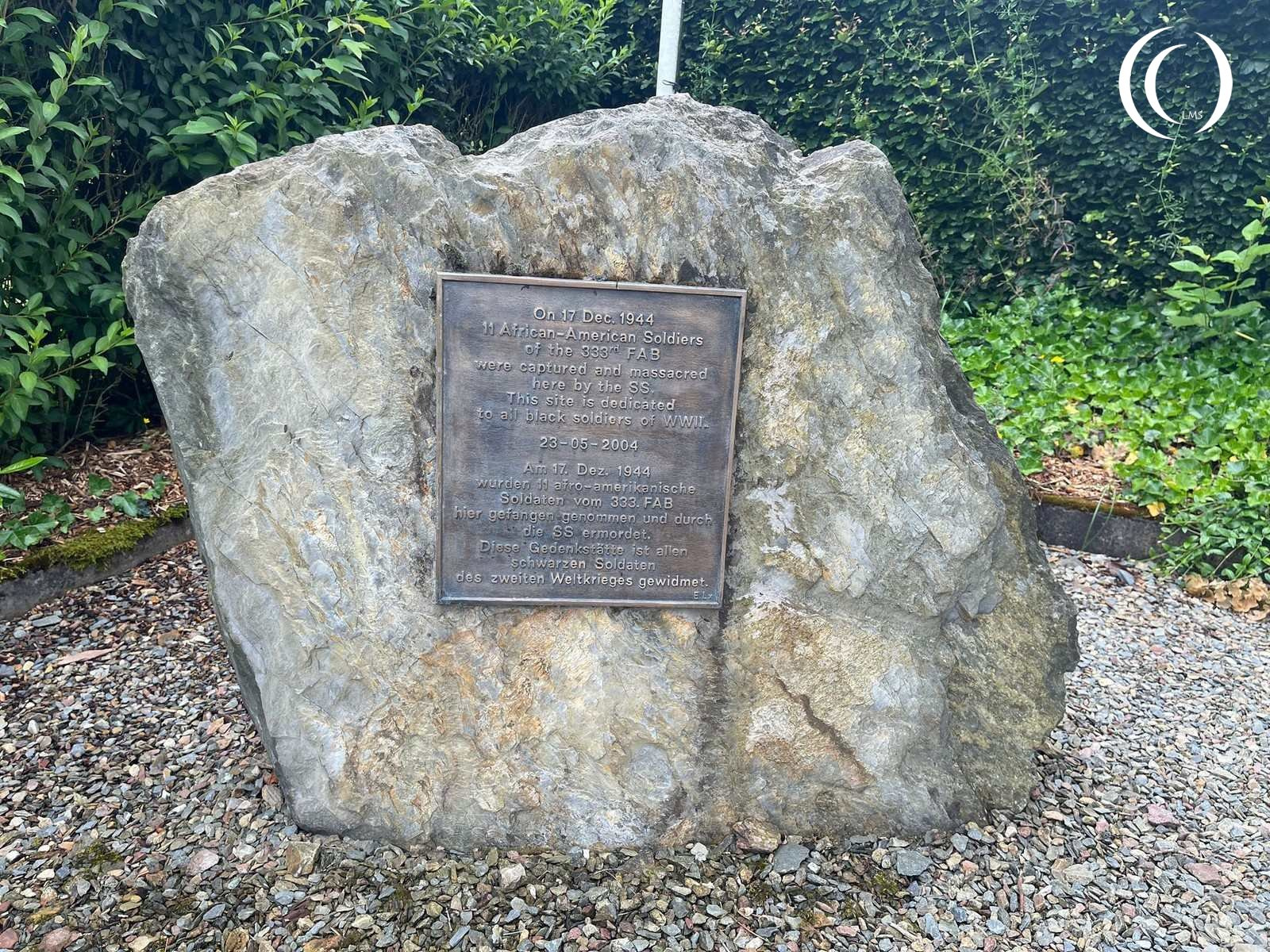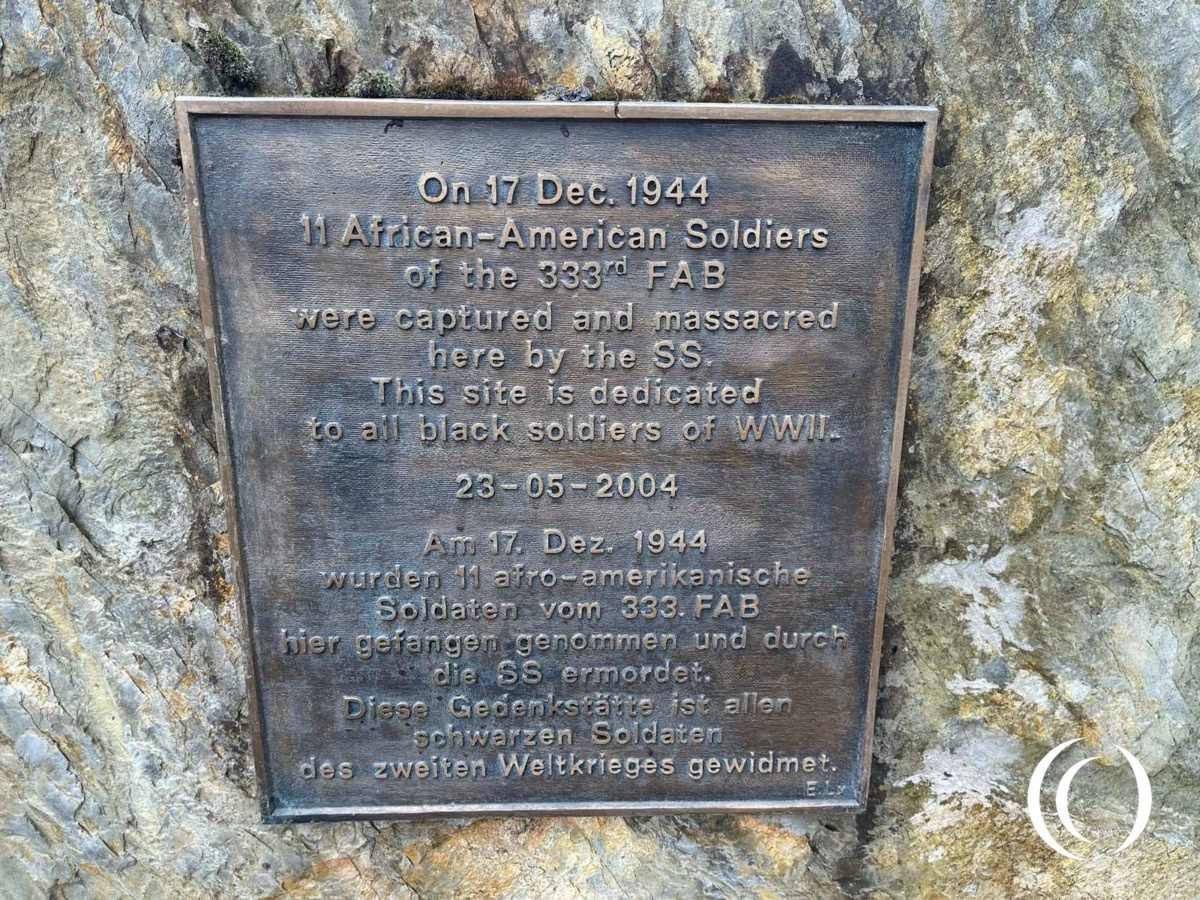
Historical Context
On December 17, 1944, amid the early stages of the Battle of the Bulge, eleven African American soldiers from the segregated 333rd Field Artillery Battalion became separated from their unit in the freezing forests of eastern Belgium. Exhausted and hungry, they reached the tiny village of Wereth and knocked on the door of the Langer family, who welcomed them inside, offering food, warmth, and directions toward Allied lines.
The Atrocity
Less than an hour later, Kampfgruppe Knittel from the 1st SS Panzer Division Leibstandarte “Adolf Hitler” (members of Kampfgruppe Peiper or Battle Group Peiper), reportedly alerted by a local informant, arrived at the Langer home. The 11 soldiers surrendered peacefully, but were marched into a nearby pasture and subjected to brutal torture before being killed (bayoneted and shot) and left in a ditch in the snow. Villagers discovered their bodies many weeks later and led U.S. Army investigators to the site in February 1945.
Kampfgruppe Knittel was a mobile Waffen-SS battle group formed during the Battle of the Bulge in December 1944. Led by SS-Sturmbannführer Gustav Knittel, it operated as part of the 1st SS Panzer Division “Leibstandarte SS Adolf Hitler under Joachim Peiper during “Wacht am Rhein”, better known as the Battle of the Bulge. The unit’s mission involved rapid reconnaissance and seizing key positions to support the German offensive in the Ardennes. Throughout the war soldiers under Knittel committed war crimes, in Russia (they killed 872 civilians in the Ukraine and they killed unarmed prisoners of war), and during the Battle of the Bulge (11 Afro-American soldiers, 8 soldiers from a mortar crew in Trois-point) etc.
Joachim Peiper and his Kampfgruppe were charged for war crimes due to the massacre near Malmedy and St. Vith. The Battle Group of Peiper was part of the 1st SS Panzer Division Leibstandarte “Adolf Hitler”. Kampfgruppe Knittel were held responsible for killing the 11 afro American members of the 333rd Field Artillery Battalion in Wereth, Belgium and its commander Gustaf Knittel was sentenced to life imprisonment. Due to contradicting information he was sentenced to 15 years in prison. Knittel died on 30 June 1976 in Ulm (Germany).

Investigation and Secrecy
The U.S. Army conducted an investigation but was unable to identify the perpetrators conclusively. The case was closed in early 1946, and no prosecutions followed. The massacre was not included in official postwar war-crimes reports and remained largely unknown for decades.
The names of the fallen, later commemorated as the Wereth 11, are:
Curtis Adams (Private)
Due Turner (Private First Class)
George Davis (Private First Class)
George Morten (Private First Class)
James Leatherwood (Private First Class)
James Stewart (Technical Sergeant)
Mager Bradley (Corporal)
Nathanial Moss (Private)
Robert Green (Private)
Thomas Forte (Staff Sergeant)
William Pritchett (Technical Sergeant)
Seven of the men are buried in the American Cemetery at Henri-Chapelle, Belgium, and the other four were returned to their families for burial after the war ended. .Posthumus all the men received a Purple heart.

Memorial and Recognition of the Wereth 11
The Wereth 11 story was rediscovered through the perseverance of local civilians and historians. Official U.S. recognition came gradually, including Congressional recognition in 2013, and further commemoration via Black History Month initiatives and film festivals. In 1994, Hermann Langer—son of the family who sheltered them—placed a modest cross at the massacre site. In 2004, a larger U.S. Memorial Wereth was dedicated at the exact field location, funded by Belgian volunteers and veterans groups. It is believed to be the only memorial in Europe specifically dedicated to African American soldiers of World War II.
Each year in May, ceremonies are held at the memorial, often attended by local residents, U.S. military personnel, and diplomats to honor the legacy of the Wereth 11. The memorial is now marked on official maps and included in guides to the broader Battle of the Bulge region’s history.

Visit
The memorial can be found next to the main road to or from the town of Wereth.